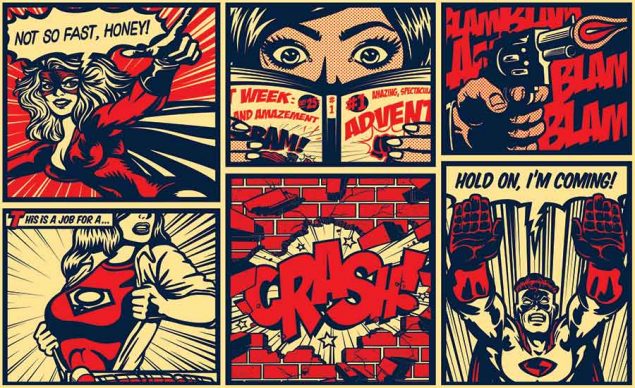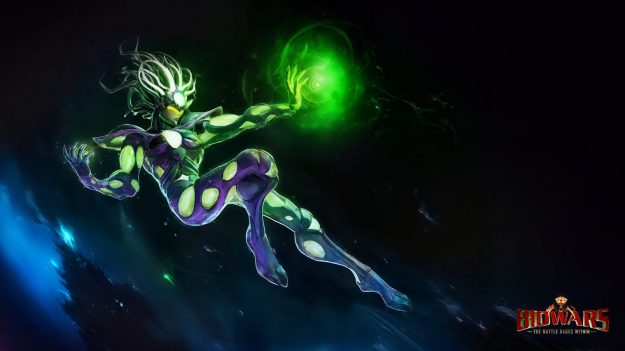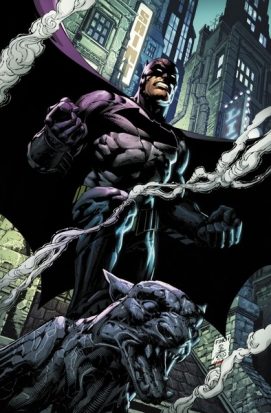Related Resources
At its very core, Biowars is an educational digital comic book. It takes readers on a thrilling adventure, while presenting them with informative content that translates to real-life scenarios that take place within our own bodies every day.
Biowars would not be what it is if it weren’t for the comic book pioneers that have come before us. The individuals who began to pursue storytelling through animation and visuals, first as a way of communicating differently, then as a true art form and career for many artists today.
So who started comic books? Well, like many other critical moments in history, we are still finding that out. As a relatively recent addition to the world of writing and storytelling, comic books and visual novels are still being discovered and cataloged all over the world.
In the Beginning…
Visual storytelling has evolved differently through various regions of the globe, but the foundational stages can be traced back to some of the subjects we are familiar with and learned in our earliest days in school. From Egyptian hieroglyphics and Greek friezes, to illustrated manuscripts and medieval tapestries, art has been used as a way to communicate stories to individuals during these time periods where the written word and the ability to read was very scarce amongst the general public.
The invention of the printing press in 1440 by a German named Johannes Gutenberg ignited the start of print materials being circulated amongst the general public in an exciting way. This marked the beginning of mass media distribution, and the expectation that common people should know how to read, and learn information at an increased frequency.
Creating Narratives
As printing and reading became a part of normal everyday life, the creation of newspapers, magazines, and other publications that distributed more reading material to the masses started to grow.
The topics they covered ranged from politics to religion and everything in between, with some taking satirical approaches that included illustrations and caricatures with narratives that would continue through a series of images to help tell the stories.
The Main Characters:
As this practice continued to evolve, we got to see different artists and writers put their own creative spin on these stories, eventually leading to the format of the comics we know and love today. These are some of the key players from the early days:
William Hogarth: Hogarth is considered one of the earliest illustrators of what we would consider comic strips today. He created a series of satirical political illustrations that would come together and be displayed sequentially.
Rodolphe Töpffer: During the early part of the 19th century, Töpffer was a key player in the comic world. He would create illustrated stories that would be displayed in sequential panels with text beneath them to explain the dialogue and what was happening in each picture.
Richard F. Outcault: Outcault created The Yellow Kid which was considered one of the original “comic strips.” He was one of the artists responsible for introducing the speech bubbles or balloons into comics. Moving away from the blocks of text beneath each illustration, these were used to directly assign dialogue to different characters in the comics.
Hergé (Georges Prosper Remi): In the early 1900’s different styles began to take form amongst various artists, and you could start to identify works by their illustrations alone. In Beligium, the cartoonist Herge created The Adventures of Tintin as one of the earliest comic series.
Stan Lee: As the former president and chairman of Marvel Comics, Stan lee brought us Spider-Man, the Hulk, Iron Man, Thor, the X-Men, the Fantastic Four, and countless other famous characters. The Avengers? You can thank Mr. Lee. The 1960’s brought a wave of change to America, and Stan Lee was responsible for making Marvel Comics a key player in the entertainment industry, and continues to do so today.
Charles M. Schulz: Schulz introduced us to Charlie Brown, Snoopy, and the rest of the Peanuts gang. The comics ran for 50 years and were one of the most profitable strips of all time, ending on the day that Schulz died, but continuing to have a successful run. The Peanuts movie came out in 2015 showing that the gang is just as popular as ever.
The Next Chapter
Along with the increasing popularity of the digital comic book, the comics we have all come to know and love are now being created into TV shows and movie franchises. This not only allows these beloved stories to live on, but they get to be told in a newly adapted media format that allows for much more creativity in how these characters and their story lines develop. We also get to introduce a whole new generation to these characters, allowing them to continue to be passed on from generation to generation.
Its interesting to see how these stories have developed over the years, and even more exciting to see what the future holds.







